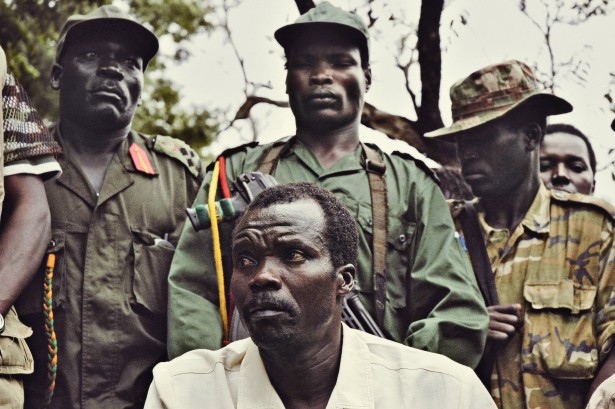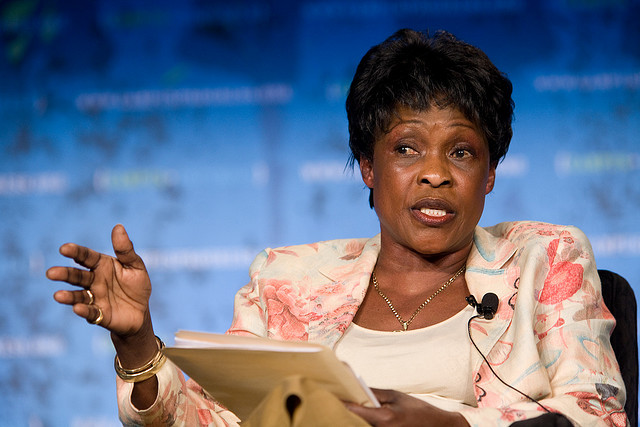“This is a male domain; if you step here we are going to kill you. Museveni
Bigombe had been appointed by Ugandan leader, Yoweri Museveni, in 1988 as Minister of State for Pacification of Northern Uganda, a post in which she was tasked with persuading the LRA rebels to give up their struggle.
She was seen by the government as the last chance “to bring sanity” following the failure of military efforts to defeat the rebels. But her role, from the start, was greeted with some challenges including death threats and harassment.

The rebels believed that since she was a woman in such a male-dominated environment, there was nothing much she could do. Being born an Acholi (an ethnic group in Uganda), many of her people felt she had betrayed them by working for Museveni, who was from the Banyankole ethnic group.
Yet, Bigombe persevered and proved herself. She would later hold deep-jungle meetings with the rebels in Northern Uganda, a move many of her colleagues in government refused to attend over fears that they would be killed.
She even went as far as negotiating peace talks directly with the ruthless leader of the rebel group and one of the world’s most feared men, Joseph Kony. Her incredible feat that would help shape Uganda as many know now was never easy, however.

Betty Oyella Bigombe (full name) was a woman born to the Acholi tribe of Northern Uganda in 1952. She grew up in what is now called Gulu District with her parents, walking many miles a day to school and ultimately earning a Bachelor’s degree from Makerere University.
Having married a Ugandan ambassador, Bigombe began her career with the Ugandan government as a Member of Parliament in 1986. It was during this same period that rebel fighting was destroying the country’s northern districts.
Although Uganda’s five-year civil war had just ended, the violence was still ongoing. Southerner Museveni’s armed uprising had disposed of the northerner-dominated government, sending the national army fleeing into the north, where it splintered into rebel groups that kept fighting, according to The Atlantic.

For many years, the LRA, under the leadership of Africa’s most wanted warlord, Kony, terrorized people in northern Uganda and some parts of South Sudan, Democratic Republic of Congo and the Central African Republic, leaving thousands of people dead and many others displaced from their homes.
From the late 1980s, the Ugandan government made several attempts to defeat the LRA but to no avail. It, therefore, created the senior position for Bigombe in 1988 to take that task
According to the Daily Monitor, the president asked her specifically to help pacify the northern region, which was in a state of unrest especially because many people did not trust the NRM government. Initially, Bigombe was against the move because she, alongside her friends and family, and other personalities from government
However, the brave woman changed her mind after visiting the war-torn areas and having witnessed the awful conditions under which the locals lived. Most of her colleagues in government would not go with her, including even her aids, so Bigombe reportedly set off to Northern Uganda to listen to the grievances of the Acholi.
“When he [Museveni] sent me up North, my mandate was to persuade the people of Acholi, Lango, and Teso to stop fighting, but there were no initiatives. By sitting in IDP camps, listening to people, I realized two things. One, that even if Kony is crazy, there were issues that needed to be addressed by the government and could best be done through peace talks. Two, the UPDF [Ugandan army], or NRA at the time, were not fighting. Senior officers were profiteering from the war, so they didn’t want the war to end. So it was not going to end; it was just going to drag on.
“I believe that to have sustainable peace you have to talk to your

Bigombe’s journey, according to Moral Heroes, “took her through mined roads, past destroyed military vehicles and deep into the jungles where abducted child soldiers stood guard in the bushes with Ak-47’s. Fearing she would not return alive, she sent letters to her children and the president expressing her last will that her children be given education and care.”
Often seen in media photographs with dark sunglasses probably to avoid harsh weather, Bigombe moved into the displacement camps and built trust with the women, while encouraging the locals to make their grievances known to the government.
An assassination attempt was made on her life, but she managed to escape after being tipped. A few days later she achieved the unexpected – a face-to-face meeting with the notorious Kony. Other meetings followed, and soon, she earned the trust of the rebels.
Once described as a nobody largely because she was a woman, she was now given the needed respect by the rebel leaders who often called her “mother Bigombe.”
Her series of negotiations with the rebels became known as the “Bigombe talks,” that caught the attention of many people globally including the international community
According to Tanenbaum, Bigombe “promoted change from all sides: locally, as well as by trying to move the government’s approach to pacification. Betty succeeded in ratifying an amnesty law, and in so doing, brought ten thousand rebels from the bush to participate in the negotiations.”
A date and time for signing a peace agreement were set but at the last minute, in February 1994, the talks collapsed when Museveni changed his mind and the region went back to war again
Nevertheless, Bigombe’s firm commitment to the negotiations won her the honour of being named Uganda’s Woman of the Year in 1994. Not being able to continue with peace talks, Bigombe went to the United States, where she lived with her two children.

She became a senior social scientist with the postconflict unit of the World Bank and later a consultant to the World Bank’s Social Protection and Human Development department.
She would be compelled to return to Uganda a decade later following the Barlonyo Massacre of 2004 that saw the deaths of about 300 people in Lira District and the displacement of many
Having seen footage of the incident on TV in the U.S., the anchor had mentioned her as the only person who came closest to bringing the war to an end through her negotiation skills
Bigombe left her paid job at the World Bank and returned to her homeland to serve as the chief mediator on a second wave of LRA peace negotiations, this time using her own resources and logistics as funding from the government was not forthcoming
These peace talks ended in 2005, but her work created a firm foundation for the Juba talks that took place on the border of Uganda and Sudan.
Bigombe later served as a Distinguished Fellow at the United States Institute of Peace and the Woodrow Wilson Center. She also worked behind the scenes in Uganda to further the peace process. From 2011 to 2014, Betty served as the State Minister for Water Resources in Uganda’s Cabinet.
With her skills in peacebuilding, she now works as the Senior Director for Fragility, Conflict, and Violence at the World Bank.










